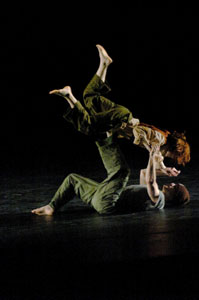9.) MAKING CONNECTIONS The 1930's: Worker's Movements

In the 1930’s, American modern dance had developed into a wide network of companies and studios which taught forms of dance that had originally been inspired by social and aesthetic revolutions against Victorian notions of womanhood, and nineteenth-century ideas of classical beauty. While modern dance had evolved its own institutions, there was still the excitement of a utopian vision of creating a better world. The Great Depression of the 1930’s triggered a general political activism. This included a continuum of reforms, from President Franklin D. Roosevelt’s “new Deal” legislation meant to help the average working-class person get ahead, to a growing sympathy for the emerging Communist Party in America.
Union Square in New York City was the hub of this political activity. It was also the center of the modern dance world, with legends such as Martha Graham, Doris Humphrey and Charles Weidman, and Helen Tamiris all occupying dance studios within walking distance. The fact that many working class and immigrant dancers were attracted to both the modern dance world and the budding radical political activity in the area created an immediate spark; dancers became involved at all levels of the political organizations, teaching to the masses and choreographing dances with political themes. An organization called the Workers Dance League was formed to organize and train workers, and the New Dance Group began to teach movement classes to amateurs. While some of this political choreography was basically agit-prop skits where oppressed workers rise up against their mean bosses to start a revolution, much of this choreographic activity focused on the human condition, revealing universal struggles within a new movement idiom.
Classroom Activity: Human Machines and the Politics of Production
Have the students make a human machine by having one person get up and start a repetitive gesture and sound. Another student attaches her/himself to the first one and chooses another repetitive gesture and sound. Another and another adds on until there is a complex machine. Then a “boss” figure enters to goad the human machine to work harder and faster. Eventually the machine breaks down. Have the students decide as a group what the resolution to this scene will be and perform it.

